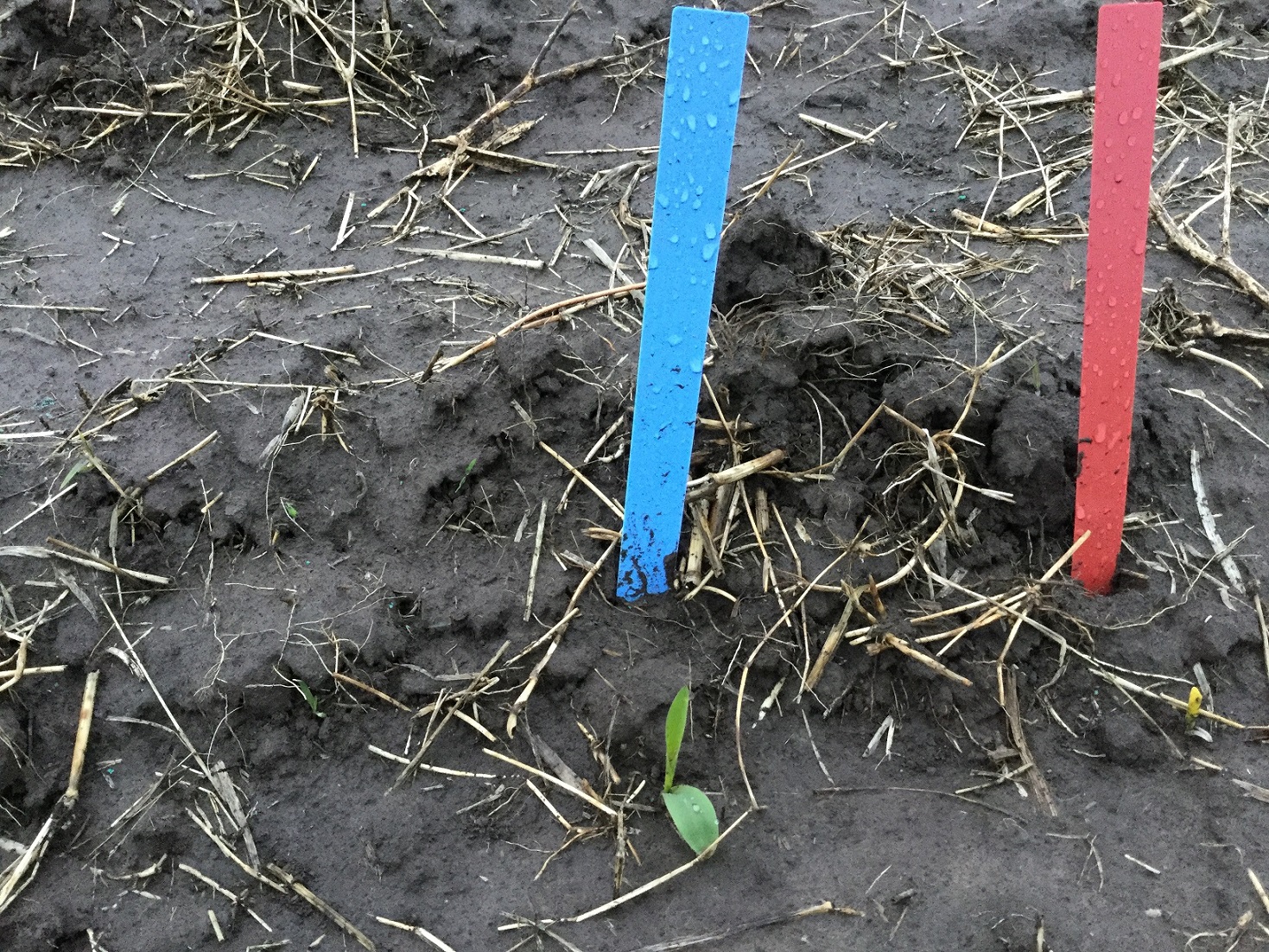Corn Emergence Factors

I like to say that we “farm when we can” in southeast Kansas. Mother Nature tends to decide when we can get into fields so when conditions are acceptable, the tractors spring into action. As such, corn planting is progressing rapidly in southeast Kansas. There are some important factors that will decide the success of those plantings.
Soil moisture is one of the more obvious factors. In our area, too much and too little moisture can greatly impact corn success. In many years, excess soil moisture prevents farmers from even starting planting. That is not the case this year. As of writing this, the surface moisture levels are quite dry. However, there is moisture below the surface and rain predicted on the horizon.
Soil temperature is also incredibly important for corn. While there is some debate over the exact essential temperature, I tend to pay the most attention to the average soil temperature being around 50 – 55 degrees Fahrenheit. Once again, in many years the soil temperatures have not reached that point as of planting. If that is the case, the seed will simply sit in the soil without germinating. This is not ideal.
However, this year the soil temperature has been ahead of schedule for the most part. In fact, on March 20th at the Parsons Mesonet station, the average 2 inch soil temperature was 59.2 degrees Fahrenheit. The average two inch soil temperature from 2010 to 2016 on March 20th is 48.9 degrees Fahrenheit. Interestingly, the two inch soil temperature just five days prior (3/15) was 43.4 degrees Fahrenheit which was over six degrees cooler than the average from 2010 to 2016.
While there are other factors that will impact corn emergence, these two are probably the most important. Even emergence is an oft discussed element of corn success. To research the impact of even emergence, a small area of corn was planted at the Parsons Research Station on February 27th. It was planted that early in an effort to induce uneven emergence. The plots have been checked daily since one week after planting (March 6).
On March 6th, some of the seed had sprouted. In fact, in all three locations that were checked the seeds had sprouted. Checks in different locations on later dates revealed that not all of the seed had sprouted by 3/6. However, it was not until March 21st that the first seedlings emerged. The cold snap that moved through the area from the 10th to the 16th slowed the progression greatly.
As most producers know, corn is greatly dependent on temperature for growth and development. Growing Degree Days (GDD) is the most common way to estimate corn growth. Corn emergence typically requires 90 to 120 GDD. The Kansas Mesonet website provides a GDD calculator for all Mesonet locations. For the Parsons plot, emergence actually took 178 GDD for emergence. The previously mentioned cold snap halted the GDD at 94 units which was, apparently, not quite enough GDD for this particular hybrid to emerge.
The goal of inducing uneven emergence is a success. Only a few emerged on the first day and as of writing this, all of the seedlings have not emerged. The ultimate goal of the project is to compare how the date of emergence influences final yield and how side-by-side plants emergence date impacts each other.
The early emergence could cause some potential issues. Since we are taking the plots to yield, if another cold front were to come, these early emerged plants would be very susceptible to frost/freeze damage.
Hopefully planting is progressing well for producers in southeast Kansas. Stay tuned for the results of the Parsons emergence study. If you have questions or would like more information, please call me at the office (620) 724-8233, or e-mail me at jcoltrain@ksu.edu, or visit the Wildcat Extension District website at www.wildcatdistrict.ksu.edu.
Contact:
Josh Coltrain
Crop Production and Local Foods Agent
Wildcat Extension District
jcoltrain@ksu.edu
(620) 724-8233
K-State Research and Extension is an Equal Opportunity Provider and Employer